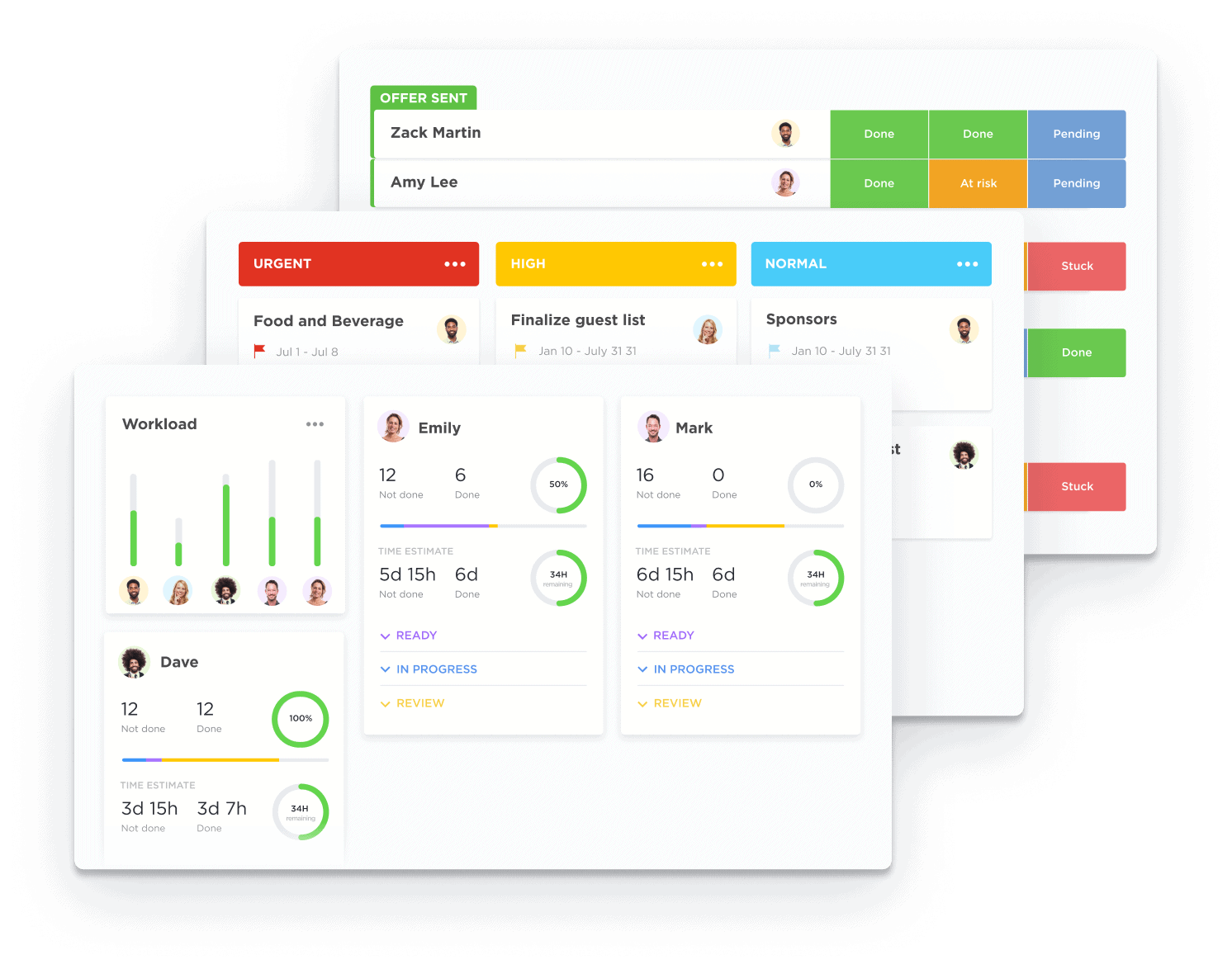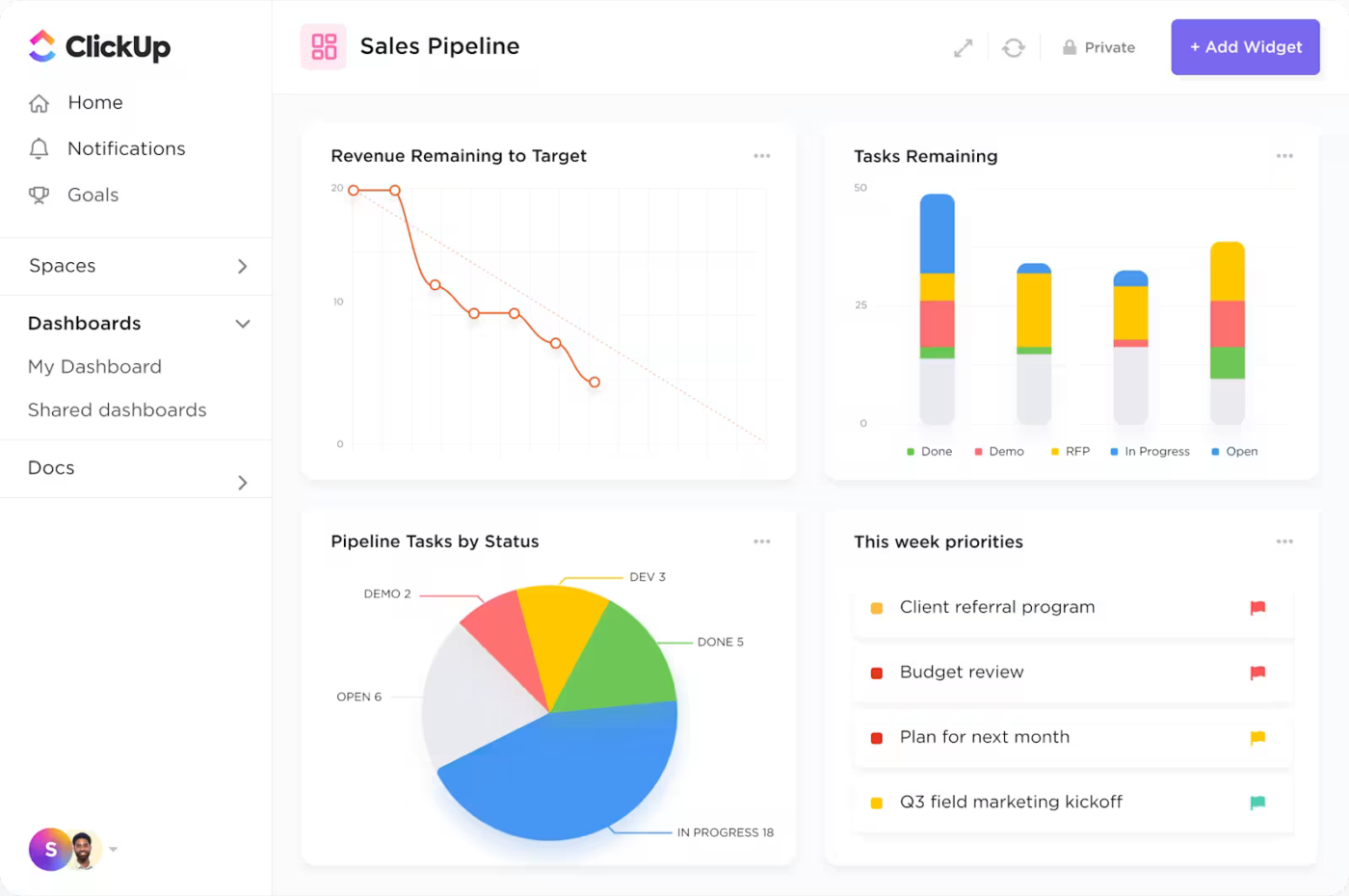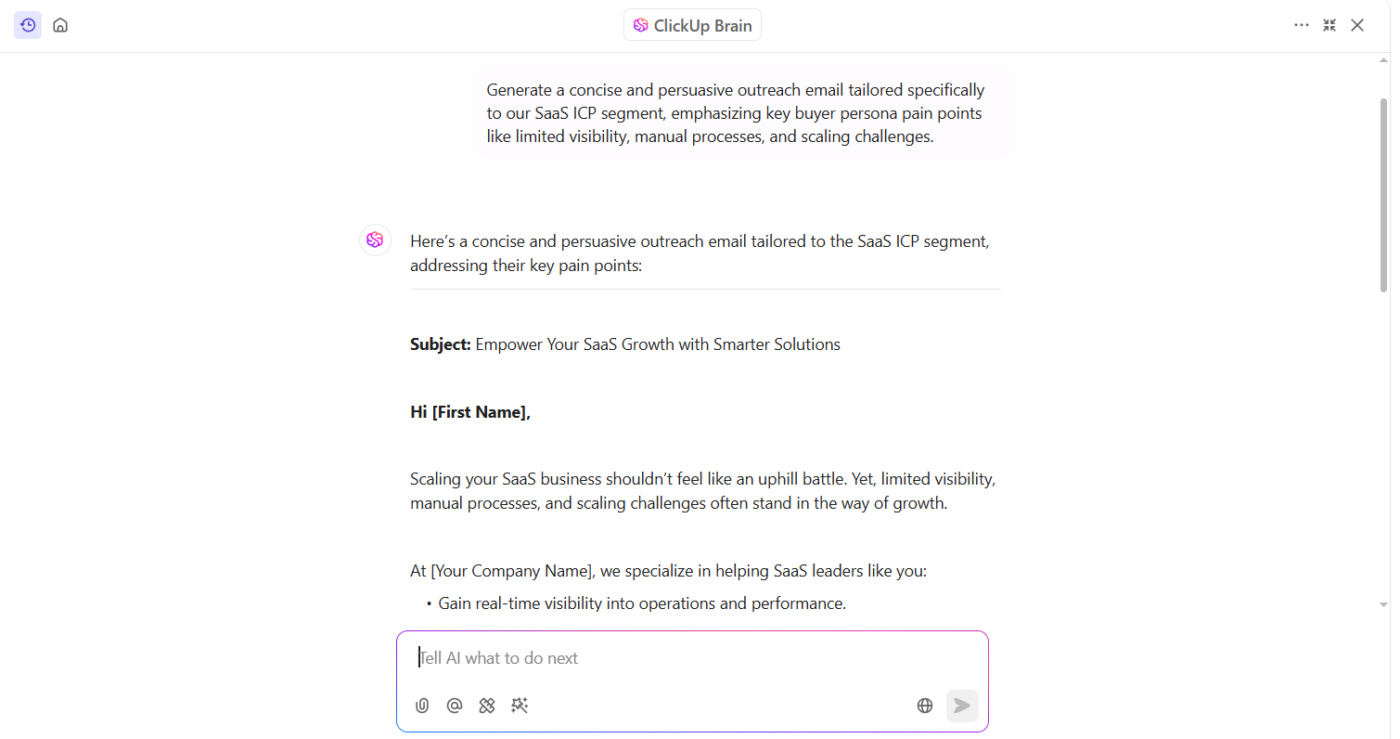ICP for Sales: How to Identify and Target for Higher Conversions

Sorry, there were no results found for “”
Sorry, there were no results found for “”
Sorry, there were no results found for “”

The aim of marketing is to know and understand the customer so well the product or service fits them and sells itself.
You can have the right pitch, the right team, and the right product and still lose deals that should’ve closed. The problem usually isn’t execution. Instead, it’s targeting. That’s where ICP sales make a difference.
It helps you zero in on the accounts that are built to convert so your pipeline stays clean and your team stays focused. When you’re spending time on leads that were never a real fit, every part of the sales cycle starts to drag.
But before you start building your ICP, you need to understand what it is.
Spending too much time chasing leads that never close? Here’s how to sharpen your sales targeting and boost conversions using ICP sales:
ICP in sales stands for Ideal Customer Profile. It is a clear definition of the type of company that’s most likely to become a high-value, long-term customer.
It’s not a broad category or a guess. It’s built using real customer data, shaped by your most successful accounts, and refined to help your sales and marketing teams focus on what works.
Unlike buyer personas that focus on individuals, an ICP zeroes in on the company as a whole like its size, structure, challenges, and buying behavior.
👀 Did You Know? According to Salesforce, 86% of business buyers are more likely to make a purchase when their goals are clearly understood by the seller.
This highlights the importance of developing a detailed Ideal Customer Profile (ICP) to enhance sales effectiveness.
A strong sales ICP typically includes:
Let’s say you’re selling a workflow platform. Without an ICP, your sales reps might waste time on leads that never convert. However, with a well-defined ICP, they know how to focus on fast-growing tech companies with remote teams, scaling operations, and a history of outgrowing manual tools.
As a result, that clarity saves time, sharpens your messaging, and improves your entire sales process. In other words, ICP in sales is your blueprint for targeting companies that close faster, stay longer, and bring the highest return.
😎 Fun Read: How to Develop A Sales and Marketing Strategy
You can have the best pitch, the most motivated sales team, and a solid product—but none of that works if you’re speaking to the wrong companies. That’s where a clearly defined ICP comes in. It gives your sales and marketing teams a shared focus and ensures every effort moves the needle.
When your sales ICP is based on actual customer data and not assumptions, it reshapes how you prioritize accounts, build messaging, and allocate resources.
Here’s what changes when your team focuses on the right ICP:
ICP sales don’t just clean up your pipeline. It gives your team direction, improves collaboration, and leads to better outcomes across the board.
Most teams build their ICP on assumptions and then wonder why conversions stall. If your ICP isn’t grounded in actual customer outcomes, it won’t drive results.
To define a strong, ideal customer profile, you need more than a few educated guesses. Overall, you need real data from your most successful customers, a clear understanding of their behavior, and a framework that guides sales and marketing teams toward repeatable wins.
Start with what you know, validate it with data, and shape it into a profile your sales team can use.
In the sections below, we’ll break down how to:
The goal is to create a working model your team can rely on. Undeniably, one that evolves with your product, your pipeline, and your revenue goals.
Defining your ICP starts with what’s already working for you. Your most successful customers reveal what product-market fit looks like in real life and not just in theory.
These accounts grow, engage consistently, and require less support. And when you look closely, they tend to have more in common than you think.
Not all revenue is equal. Your best-fit customers are the ones who:
This is your baseline. You’re looking for accounts that reflect the outcomes you want to repeat.
Once you’ve pinpointed your top accounts, dig into the customer data behind them. Hence, you’re looking for shared traits, like:
These common characteristics become the foundation of your ideal customer profile. If five of your top customers are all mid-sized SaaS companies switching from outdated legacy tools, that’s not a coincidence; it’s insight.
This analysis isn’t about reporting metrics. It’s about using actual success stories to drive better sales targeting. When you define your ICP around companies that have already seen results, your team stops guessing and starts replicating what works.
Every insight here sets the stage for validating your assumptions with broader data points and market research, which is exactly what we’ll cover next.
Once you’ve analyzed your existing customers, the next step is to validate your assumptions. That’s where data-driven insights and market research come in.
This is how you make sure your ICP isn’t just shaped by internal bias. It’s backed by the kind of data your sales and marketing teams can confidently build a strategy around.
Customer interviews are useful, but they’re not enough alone. You need a balance of qualitative context and quantifiable trends. Start by collecting:
This gives your team a fuller picture of what makes a lead “high-quality” beyond surface-level firmographics.
If your team uses tools like ClickUp, consider embedding surveys using ClickUp Forms to capture structured feedback across customer segments. This allows you to collect firsthand data on why certain accounts convert, and why others don’t.

Validating your ICP goes beyond your own customer base. External market research helps you understand the broader buying landscape.
Use sources like:
You can also pull data from third-party tools to assess TAM (Total Addressable Market) alignment. This ensures your ICP isn’t too narrow, or worse, irrelevant to where your category is heading.
The goal here is to gather the right data that supports smarter sales targeting and marketing strategy decisions.
⚡ Template Archive: Best Sales Funnel Templates to Generate More Leads
Once you have your research and internal data combined, look for patterns that hold across both.
Are companies of a certain company size consistently converting faster? Do certain pain points show up in both customer interviews and industry reports? Does a particular vertical demonstrate higher conversion rates or stronger customer retention?
These data points become the signals that define your ICP, giving your sales team confidence and direction when prioritizing leads. Your ICP is a tested hypothesis backed by numbers, outcomes, and real-world context. And the better the data behind it, the stronger your results.
A strong ICP can fall flat if it doesn’t directly shape how your sales and marketing teams operate. Defining the right customer is only half the equation, executing around that definition is what drives results.
When both teams align on ICP insights, your pipeline gets cleaner, your messaging becomes more relevant, and campaigns stop attracting the wrong audience.
📖 Also Read: A Complete Guide for B2B Marketers
Your ideal customer profile gives you the company view. But to activate it, you need to go one layer deeper and understand the individuals within those companies.
This is where buyer personas take over. For each ICP segment, map out:
Personas help sales reps tailor their outreach and give marketing teams the clarity to build messaging that resonates.
Once you have ICP segments and buyer personas defined, execution needs to be collaborative. It’s not enough for marketing to hand off leads, they actually need to build campaigns that sales teams want to follow up on.
Using a shared system like the ClickUp for Marketing Teams, you teams can plan, track, and optimize campaign activity in one place. With centralized visibility, alignment stops being a talking point and becomes the default.
Campaigns should be built around the needs, language, and urgency of your ICP. That means no more broad messaging or guessing what will convert.
For execution, use the ClickUp Marketing Campaign Management Template. It gives your team a flexible system to:
This allows marketing teams to move faster without sacrificing strategy because everything’s rooted in the profile your revenue depends on.
With alignment in place, your ICP should be visible in every touchpoint, from subject lines to call scripts. It should influence how your team:
Strong sales and marketing alignment isn’t about holding more meetings. It’s actually about letting your ICP guide what gets built, who it’s for, and how it’s delivered.
Defining your ICP is only part of the equation. To truly implement it, your team needs the right tools to help you apply ICP insights across targeting, outreach, campaigns, and pipeline management.
After all, the right tech stack doesn’t just store data. It empowers your sales and marketing teams to work smarter, stay aligned, and drive higher conversions from your best-fit accounts. ClickUp is a powerful tool for sales teams to manage their workflows, improve collaboration, and drive results.
ClickUp for Sales supports an ICP-based sales strategy by providing tools and features that align with your Ideal Customer Profile. It empowers the sales team by bringing everything from lead tracking to customer onboarding and deal collaboration into one place.

Your CRM is where your ideal customer profile should live and breathe. So, you need to look for systems that allow you to:
This helps your sales reps quickly identify high-fit leads and focus their efforts where it matters.
CRM boards are fully configurable to match your sales strategy and track progress by ICP type or segment. With ClickUp CRM, sales teams can customize views, build ICP-specific pipelines, and manage outreach sequences—all from one place.

📖 Read More: How to Create CRM Reports for Your Sales Team?
Once ICP-aligned activity is in motion, your team needs visibility into performance. Tools with real-time dashboards help you:
The ClickUp Dashboard lets you build visual reports that track every key ICP metric in one view. This helps both marketing and sales teams stay focused on what’s working.

Capturing and activating ICP data should be frictionless. Tools that support automation, form collection, and integrations help bridge the gap between insight and execution.
With ClickUp Forms, you can create custom fields to collect ICP-relevant info from inbound leads, surveys, or demo requests. Automatically route form responses to specific pipelines or teams based on behavioral data or fit score.
ClickUp also supports CRM integration, workflow automation, and lead assignment based on customer data and predefined rules, saving time and reducing manual handoffs.
If you want to learn more about workflow automations and how to make your life easy with automation tools, check this out 👇
Executing campaigns that speak directly to ICP segments requires more than strategy—it demands speed, clarity, and alignment across teams.
Overall, your tools should help your marketing team :
With ClickUp Brain, marketers can use AI to generate messaging tailored to each ICP segment. It lets you refine positioning by buyer personas, and adapt content across formats without having to switch tools. Whether it’s drafting outreach copy or iterating on ad concepts, ClickUp Brain speeds up execution while keeping everything aligned with your ICP data.

The right tools don’t just make execution easier; rather, they make strategy scalable. When your systems are aligned with your ICP, every message, call, and campaign has a sharper focus and a stronger impact.
⚡ Template Archive: Free CRM Templates for Excel, Google Sheets, & ClickUp
A solid ICP gives your team focus. A flawed one? It slows everything down, from outreach to retention.
Below are five mistakes that quietly derail even experienced teams and how to fix them.
Targeting every company that might benefit from your solution is how you end up with a bloated pipeline and weak conversions.
✅ Solution: Narrow it down based on your top-performing customers. Look at industry, company size, annual revenue, and specific pain points they came in with. The tighter your focus, the stronger your results.
Leadership might think you should go after the enterprise. Sales might chase startups. But unless it’s backed by data, it’s guesswork.
✅ Solution: Pull data from your CRM, onboarding metrics, expansion rates, and behavioral data. Let actual customer performance shape your ICP and not just internal alignment.
💡 Pro Tip: Overlay win/loss analysis with lead source and sales cycle data to uncover what really drives conversions.
Your top clients in fintech aren’t the same as the ones in SaaS. Instead, teams treat them like they are, which leads to generic messaging that completely misses the mark.
✅ Solution: Segment your ideal customer profile by vertical or use case. Tailor your messaging, qualification criteria, and sales strategy around each segment.
A static profile gets outdated fast, especially as your product, market, or pricing evolves.
✅ Solution: Revisit your ICP quarterly. Track which ICP-fit accounts are expanding, churning, or converting fastest. Use these insights to keep your profile current
If your sales reps can’t find the ICP, they won’t use it. And if marketing teams can’t align campaigns around it, they’ll default to generic messaging.
✅ Solution: Build your revenue-driving sales ICP into your CRM, dashboards, and campaign briefs. Make it part of your actual workflow rather than a one-time exercise
💡 Pro Tip: Use custom fields or automation rules to flag high-fit accounts in real-time
These mistakes seem small until they start compounding across your funnel. Avoid them, and your ICP sales strategy becomes sharper, faster, and far more effective.
If your team is still chasing every lead that shows interest, your ICP isn’t doing enough. A strong profile should not only filter out low-fit leads, rather, it should help you identify companies that closely align with your offering, focus your sales efforts on the most valuable customers, and reinforce a targeted account based marketing strategy that’s built to convert.
With that kind of precision, there’s less guesswork in your pipeline and far more deals that actually close.
Sign up for ClickUp and turn your ICP into a revenue engine.
© 2025 ClickUp